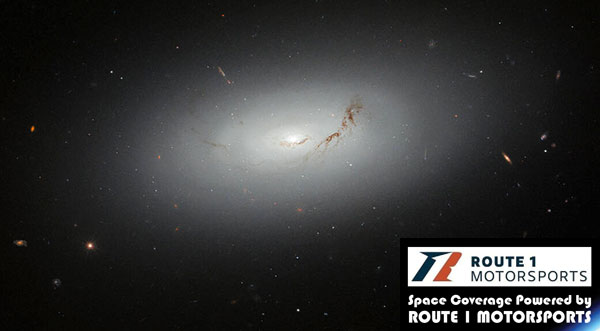NASA & SPACE NEWS

(NASA) – This dream-like image from the NASA/ESA Hubble Space Telescope features the galaxy known as NGC 3156. It lies about 73 million light-years from Earth, in the minor equatorial constellation Sextans.
NGC 3156 is a lenticular galaxy, with two visible threads of dark reddish-brown dust crossing the galaxy’s disk. This galaxy type is named for their lens-like appearance when viewed from the side or edge-on.
They fall somewhere between elliptical and spiral galaxies and have properties of both. Like spirals, lenticulars have a central bulge of stars and a large disk surrounding it.
They often have dark dust lanes like spirals, but no large-scale spiral arms. Like ellipticals, lenticular galaxies have mostly older stars and little ongoing star formation.
Astronomers have studied NGC 3156 in many ways – from its cohort of globular clusters (roughly spherical groups of stars bound together by their gravitational attraction) to the stars being destroyed by the supermassive black hole at its heart.
Using Hubble data, they compared stars near the galaxy’s core to those in galaxies with similarly sized black holes. They found that NGC 3156 has a higher-than-average percentage of stars gobbled up by its supermassive black hole when compared to its counterparts.
CLICK HERE FOR BREVARD COUNTY NEWS
The post NASA’s Hubble Space Telescope Spots Dreamy Galaxy 73 Million Light-Years Away from Earth appeared first on Space Coast Daily.

